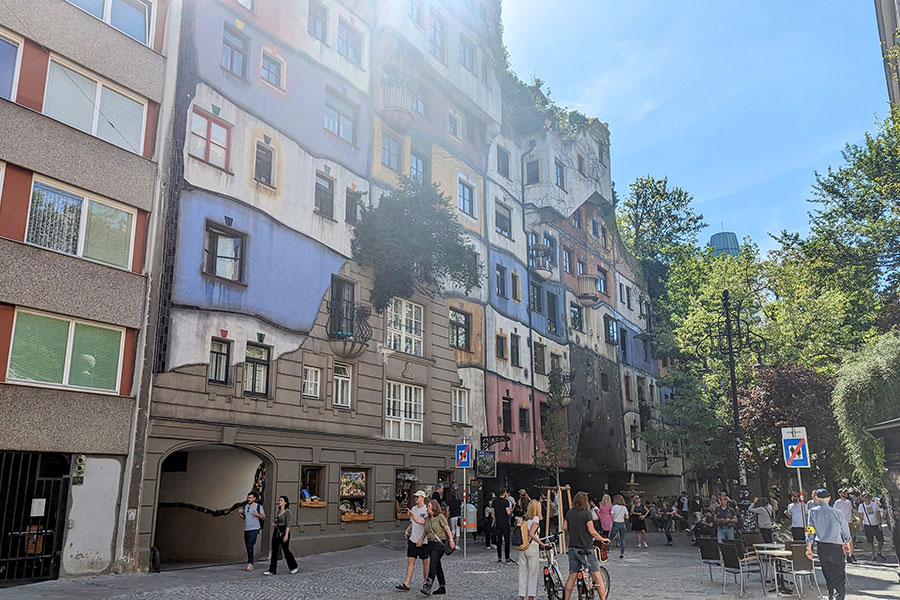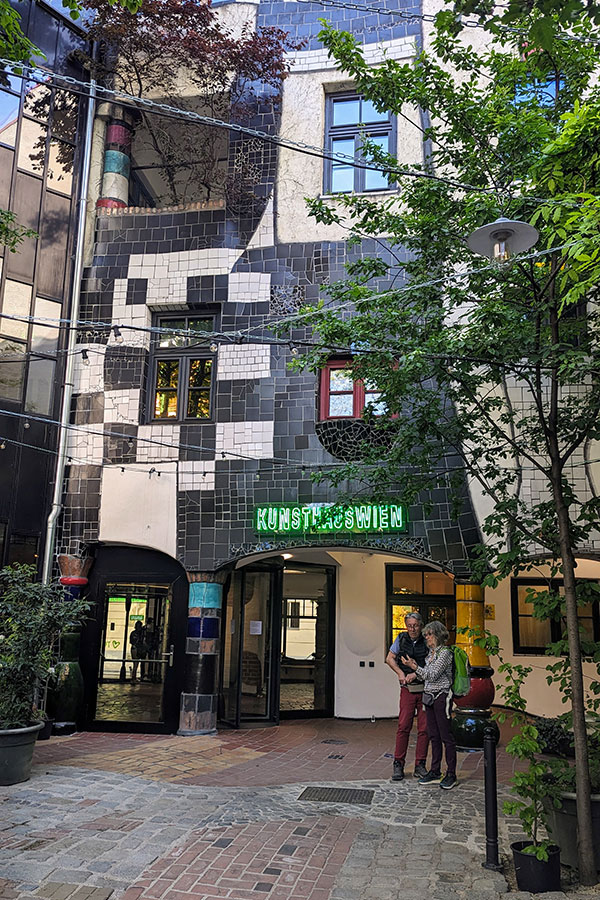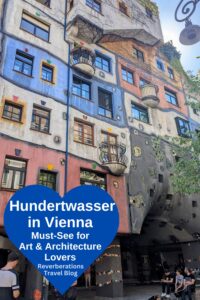For many travelers, it’s easy to imagine Vienna as a city of timeless tradition—a capital of sumptuous palaces and Art Nouveau elegance, where the elite waltz the night away in spectacularly lavish ballrooms. That’s precisely why Friedensreich Hundertwasser’s thoroughly modern art and architecture stand out. Think Gaudí meets Klimt.
With bright colors (and lots of them!), organic lines that evoke movement, and a touch of whimsy, Hundertwasser’s work contrasts sharply with the refined Viennese stereotype.
Several of his creations can be found worldwide, including in Germany and Japan. In Vienna, visitors can immerse themselves in his visionary art and architecture at the Hundertwasserhaus, Hundertwasser Village, and KunstHausWien.
Get to Know Hundertwasser
Friedensreich Hundertwasser was born Friedrich Stowasser on December 12, 1928, in Vienna to a Catholic father and a Jewish mother. He survived World War II partly by being baptized into his father’s religion at the age of seven.
After briefly studying at the Academy of Fine Arts in Vienna, he set off to explore the world, reinventing himself as Friedensreich Hundertwasser. By the 1950s, he had expanded his artistic repertoire to include painting, architecture, and design. However, his first architectural models weren’t constructed until the 1970s, when they were showcased on a European television program.
Hundertwasser’s philosophy emphasized creativity, individuality, freedom of expression, and environmental sustainability. He penned manifestos advocating for the rejection of boring, conventional architecture, planting trees in urban environments, and the prohibition of nuclear power.
In 2000, he passed away aboard the Queen Elizabeth 2 while returning to New Zealand, where he had made his home.
KunstHausWien
The perfect place to begin a Hundertwasser adventure is at KunstHausWien. Located just a block from the Donaukanal, KunstHausWien is a museum showcasing a permanent exhibition on the artist alongside rotating temporary exhibits.
Opened in 1991, the museum is housed in a former furniture factory. Hundertwasser himself oversaw the building’s transformation, a two-year project.
The magic begins upon arrival. Lush greenery envelops a charming courtyard, while the building’s facade is a visual delight. A checkerboard paint scheme is accented with colorful keystones, vibrant columns, and intricate tile work. Don’t miss the green-planted flat rooftop overhead.
Inside, the factory’s original hardwood floors merge seamlessly with Hundertwasser’s trademark gently undulating tiled floors.
The exhibits provide a comprehensive overview of Hundertwasser’s art, showcasing his versatility, prolific output, and fearless creativity.
Tickets are required for entry. The Vienna City Card offers a discount on admission.
Hundertwasserhaus (Hundertwasser House)
A short walk away lies the iconic Hundertwasserhaus, also known as the Hundertwasser House.
In the late 1970s, Hundertwasser was invited by then-Mayor Leopold Gratz and then-Chancellor Bruno Kreisky to design a residential building. Architect Josef Krawina was also brought on board to collaborate on the project.
Initially, the two had radically different visions for the design. However, by 1985, construction was complete, and the building reflected Hundertwasser’s distinct aesthetics and philosophies. (Krawina later successfully sought legal recognition as the building’s co-creator.)
The Hundertwasserhaus remains a functioning apartment complex. Residents are encouraged to decorate their balconies, while the property is home to hundreds of trees. However, the building’s uniqueness has made it a major tourist attraction. Visitors often gather on the rolling tiled sidewalks adorned with an elaborate fountain and, unexpectedly, a bright red British telephone booth.
Hundertwasser Village
While the Hundertwasserhaus itself isn’t open to the public, directly across the pedestrian-only street is Hundertwasser Village. Constructed in the early 1990s in a former tire workshop, the village was designed by Hundertwasser and is a delightful mix of small shops, a cafe, and a bar. True to form, the architecture is just as whimsical and unconventional as you’d expect.
Hundertwasser Village is free to enter and open 365 days a year.
Getting There & Getting Around
Reaching KunstHausWien, Hundertwasserhaus, and Hundertwasser Village is easy via public transportation. The nearest stops are Radetzkyplatz on the U-Bahn or tram lines. Alternatively, there are bike and car parking facilities nearby.
For those who prefer hop-on, hop-off bus tours, BigBus Tours includes a stop at Hundertwasserhaus on its route.
Save this post for later on Pinterest!
All opinions and photos are my own. This post contains affiliate links.









